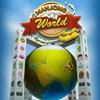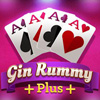Healthy Living Makes a Difference
Partners in Grime
Before commercial cleaners were introduced in the 1940’s, cleaning was done with soap, water and a lot of elbow grease. Today, Canadian households use approximately 54 kilotons of general purpose cleaners per year, resulting in the contamination of our fresh water, soil and air resources – all the while potentially presenting an assault on human health in measurable and unmeasurable terms. Although cleaning products may be necessary for reasons of hygiene, consumers should take steps to reduce their use of cleaners and choose products that are environmentally responsible and leave a small ecological footprint.
The following is a compilation of environmentally responsible cleaning ingredients that can be used in many “recipes” – or in other words, in combination with each other to make enough cleaning solutions that can take the place of over 150 different types of un-natural cleaners. They are easy to make, work well, do not abuse the environment and use limited resources in their production. Probably the most important ingredient that these recipes require is elbow grease! – which helps keep us in shape. All of these recipes follow the 3 E’s of Environmental Sustainability. They are Effective, Economical & Environmental Responsible. They cost the same as or less than conventional harsh detergent products and they do not contain phosphates, enzymes, dyes or E.D.T.A.
The six basic cleaning ingredients for these recipe/combinations are:
- Soap Flakes or Powder (sodium palmitate, cocoate or tallowate) are molecules which attract dirt and grease on one end and are water soluble on the other end. Soap flakes are manufactured by a process called saponification. The term saponification is the name given to the chemical reaction that occurs when a vegetable oil or animal fat is mixed with the strong alkali, sodium hydroxide, and heated. The products of the hydrolysis reaction are soap and glycerol. Once the soap solidifies it is ground into flakes. Some Recipes: Scouring Cleaner; Laundry soap; Aluminum Pan Cleaner.
- Baking Soda (sodium bicarbonate) is produced when carbon dioxide reacts with water and then is neutralized to its sodium salt. It is perfect for deodorizing, softening water and scouring. Some Recipes: Shower Pucks, Car Washing Solution; Vinyl Upholstery Cleaner.
- Washing Soda (sodium carbonate) is related to baking soda. It cuts through grease, softens water and disinfects. It can also be used in swimming pools to increase the pH level. Washing Soda is derived from solution mining of natural, trona mineral deposits. Solution mining offers a process by which sodium products can most efficiently be extracted from ore deposits. The trona ore is dissolved in a water solution creating a brine. The brine is processed to recover sodium carbonate (washing soda) and other sodium products. Some Recipes: Toilet Bowl Cleaner, Automatic Dishwasher Powder; Ant Bait.
- Borax (borax pentahydrate) is composed primarily of sodium and boron and is a naturally occurring mineral. It can be used for disinfecting, cleaning and deodorizing. Borax is hydrated sodium borate, a mineral ore of interlocked chains of boron, hydrogen, oxygen, water and sodium. Borax is created from refining recovered ore from dried playa lake beds. A playa lake is one that fills with rain water then dries out leaving various salts. The deposits are refined by boiling the ore in water and adding carbonated soda which causes the borax to dissolve and impurities to settle out. The water borax mixture is poured off and cooled, allowing borax crystals to form. Some Recipes: Toilet Bowl Cleaner; Automatic Dishwasher Powder; Ant Bait.
- Vinegar is a dilute acetic acid that results from the fermentation of ethyl (human consumable) alcohol. Its acidic quality enables it to cut through grease. Vinegar Concentrate can be 5 times the strength of regular vinegar (acetic acid). Concentrated Vinegar Cleaner is as powerful and versatile as a natural cleaner can get. It’s a heavy-duty limescale remover and environmentally-friendly bleaching agent. For use on counter-tops, appliances (including stainless steel), glassware, and many hard surfaces. Avoid use on copper and aluminum. Some Recipes: All Purpose Cleaner; Ceramic tile / Grout Cleaner; Calcium Deposit Remover (kettles, tea pots, dishwashers)
- Ammonia is a gas which is condensed into a liquid, and diluted with water for household use. It can be used for cleaning and disinfecting. But be careful; ammonia can irritate the skin and eyes and it can inflame the respiratory tract if deeply inhaled. It is also toxic if mixed with other cleaning products such as bleach or tub cleaners.
These six ingredients are listed by Pollution Probe as six of the safer cleaning substances currently available for household use. Visit our store to learn how to make the exact recipes and ratios of ingredients to make your greener, cleaning solutions. The protection of the planet is a shared responsibility. Please do your part by adopting a more environmentally sustainable lifestyle.




